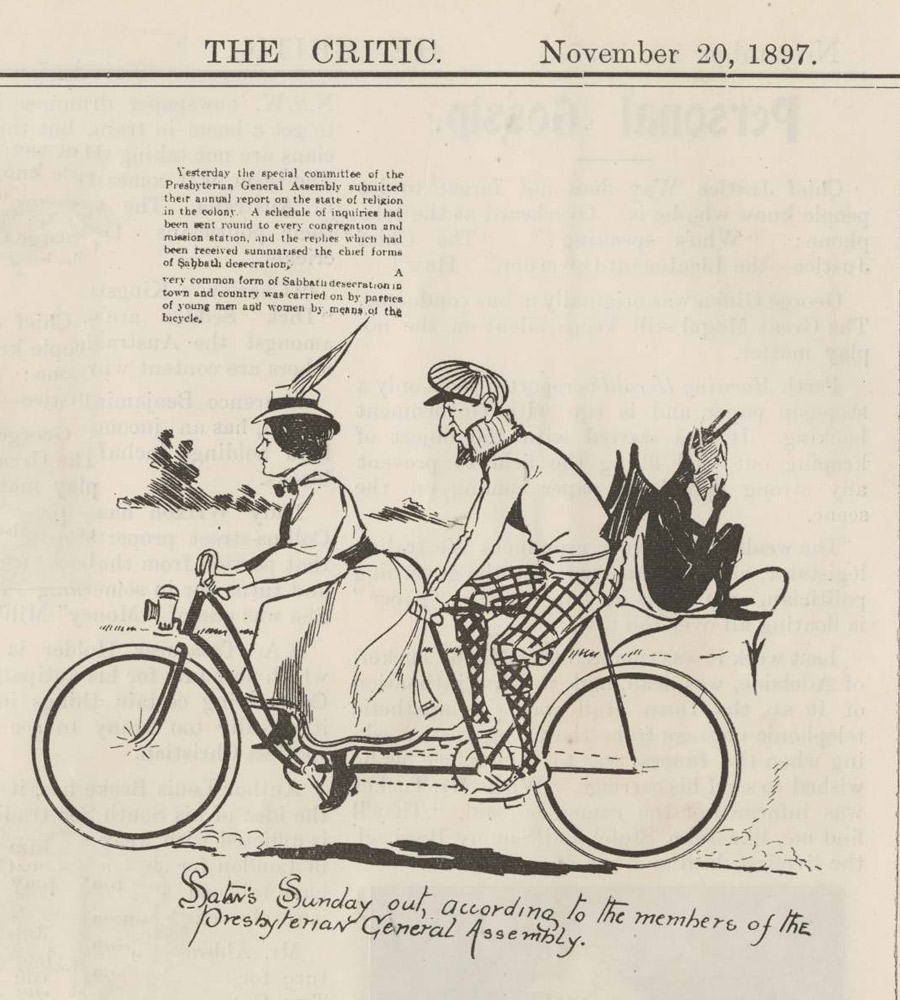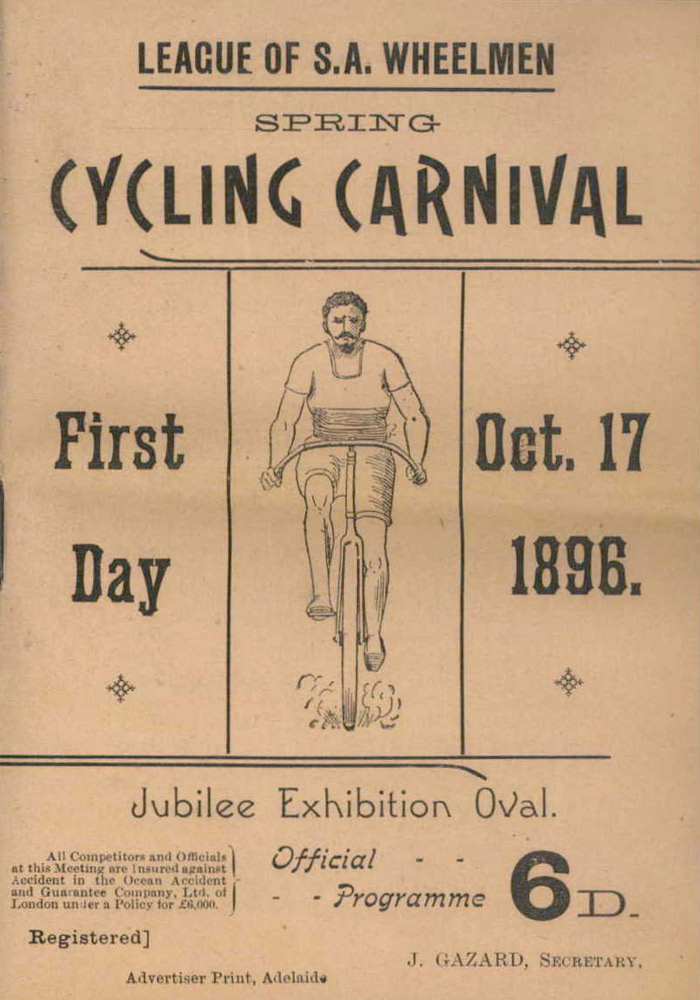That was then: Adelaide’s Riding Past
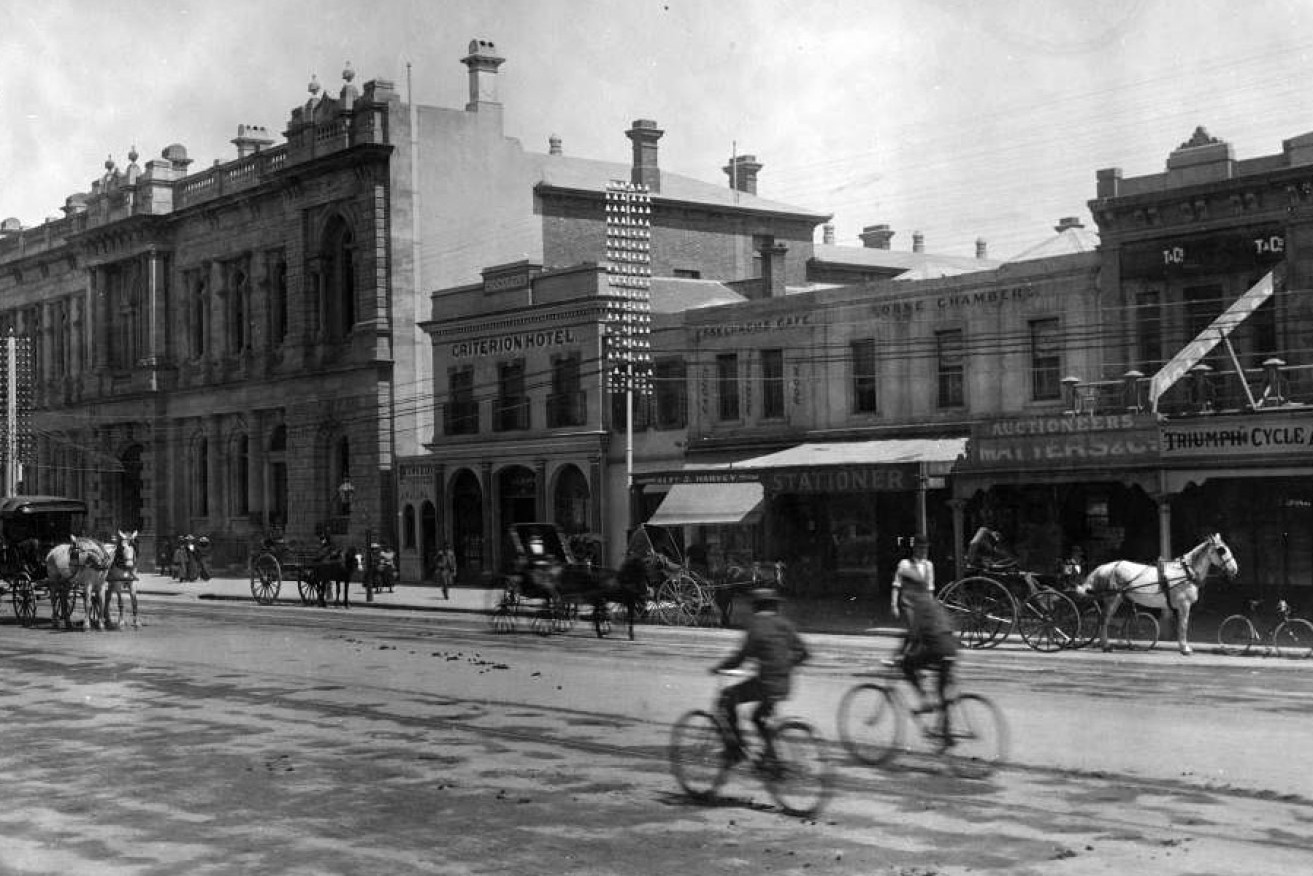
King William Street south of Pirie Street, Adelaide, 1897. Photo courtesy State Library of South Australia (ref B 5258)
There was no need for special bikeways when this photo was taken on Adelaide’s King William Street in 1897.
As one of the most popular forms of transport, bikes had a prime position on the city’s roads and were not confined to narrow lanes sandwiched between motorcars and footpaths or barricades and parked vehicles.
The biggest threat to riders came from horse-drawn transport, rutted roads and – for ladies – the long, flared skirts that were de rigueur at the time. The Triumph Cycling Agency seen in the background here was in a bustling location near the Town Hall, the Criterion Hotel, Lorne Chambers and Esselbach’s Café.
Held in the State Library of South Australia, the image is one of a collection of cycling-related photographs, posters and other memorabilia unearthed during research for the Riding Past street exhibition which opens on Friday as part of the Velo-fringe bike festival.
Inspired by a similar, smaller exhibition held during the Tour Down Under, Riding Past is being presented by the National Archives of Australia, State Records of South Australia, State Library of South Australia and Adelaide City Archives.
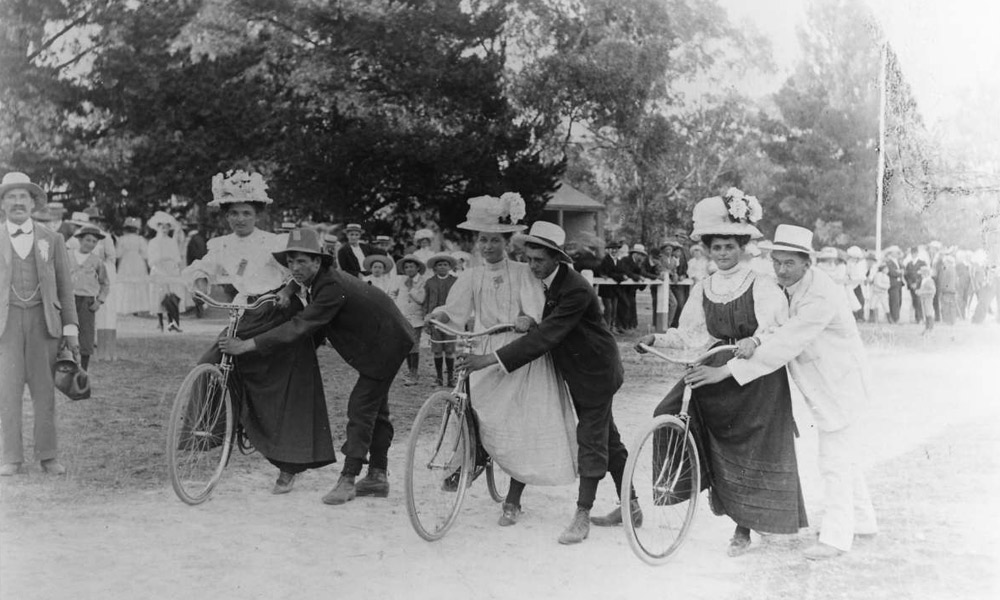
The start of a ladies’ cycle race in 1900 in Mount Gambier, photographer Herbert Collyer. Courtesy State Library of SA (ref B 46443)
Nick Gleghorn, manager of the Adelaide office of the National Archives, says around 24 items will be displayed in prominent locations in the central city, such as the Adelaide Central Market, Gilles Street, Leigh Street, the Convention Centre and opposite the Exeter Hotel in Vaughn Place.
He says that with items dating back to the 1870s, the exhibition tells a story of the popularity and development of cycling in South Australia.
It also reveals something about the customs and social mores of the time, with a cartoon from The Critic in 1897 titled “Satan’s Sunday Out” depicting Satan hitching a ride on a bicycle ridden by a man and a woman. The accompanying report states that a special committee of the Presbyterian General Assembly believed “a very common form of Sabbath desecration in town and country was carried out by parties of young men and women by means of the bicycle”.
The Flickr site associated with the exhibition also features images of cyclists with penny farthings and a wooden-wheeled velocipede; a photo of the SA Police Cycle Corp with their “Bullock” bikes; bicycle advertisements and letters – including one from a Department of Trade and Customs messenger seeking an increase in his monthly allowance of 6/8 (six shillings and eight pence) for use of his own bike for “delivery of official papers to the wharves and oil bonds”.
Among favourite posters nominated by Gleghorn are a 1936 Centenary Cycling Derby poster and the cover of an 1896 program which accompanied the wonderfully named League of SA Wheelmen’s Spring Cycling Carnival.
Gleghorn said the National Archives held a surprising number of patent records relating to cycling from the 1890s and early 1900s, when people were devising improvements relating to bikes and associated equipment and accessories.
One intriguing letter to the SA commissioner of patents, which unfortunately doesn’t lend itself to reproduction as an exhibition poster, comes from a New Zealand “spinster” named Susan Emily Francis, who had designed an “improved cycling skirt”. Complete with detailed patterns, the 1898 letter states: “The object of the invention is to provide a skirt which may have an ordinary appearance when the wearer is walking and when required for riding may be easily and rapidly adjusted to provide room for the vertical movement of the legs without dragging the knees or unduly exposing the legs of the rider.”
We can only imagine what Miss Francis would have thought of today’s Lycra cycling shorts.
The Riding Past exhibition opens on Friday and continues until May 31. Guided cycling tours of the posters will be run throughout the month; the public can also view the exhibition and contribute their own images online or by using #ridingpast for Twitter and Instagram. A talk about the records will be held on the morning of May 22 at the South Australian Archives Centre in Leigh Street (Details and bookings here).
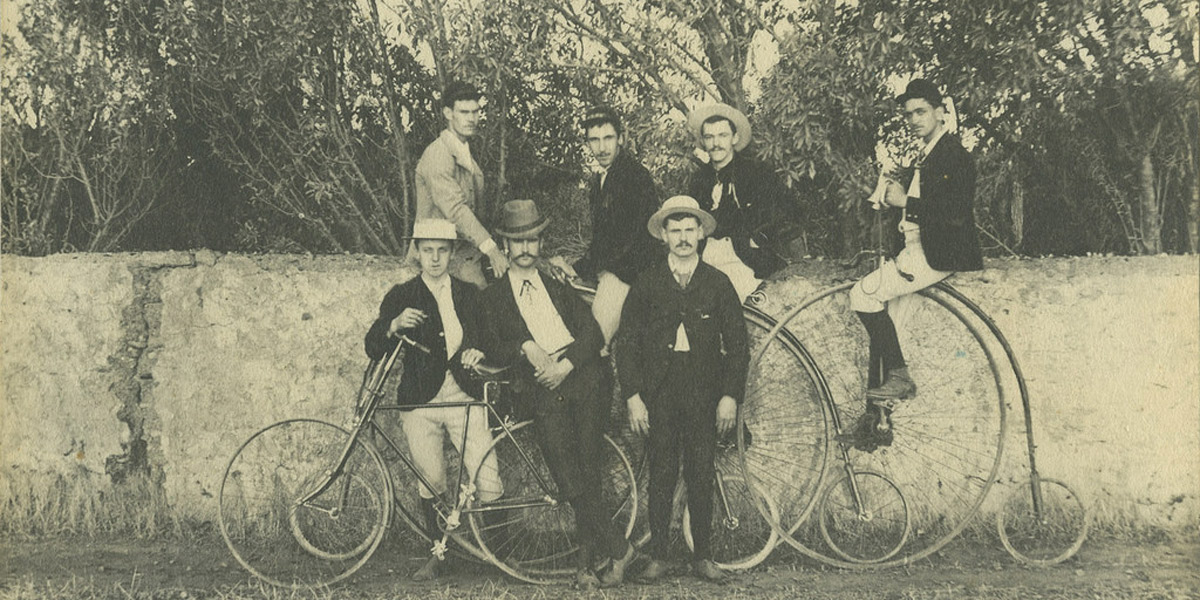
A group of male cyclists with bicycles and penny farthings c1890. Photo courtesy of City of Adelaide (ref HP1781)
